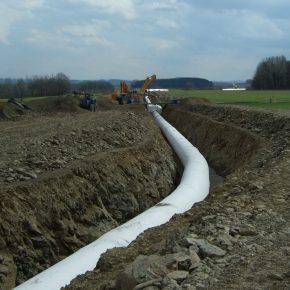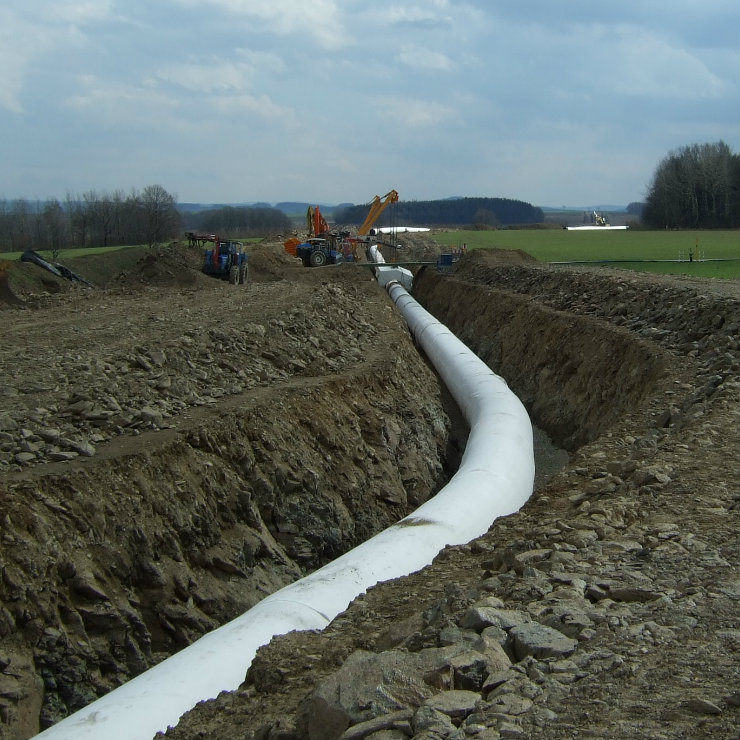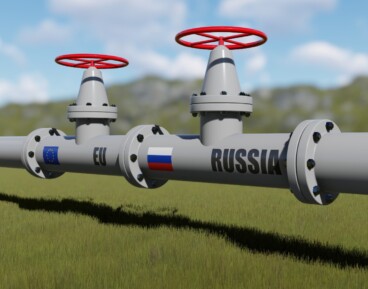German automotive industry at a crossroads
Category: Business

Opal pipeline, Juchhöh near Weißenborn, Germany (malenki, CC BY-SA)
Naftogaz said it had asked permission from the European Court of Justice (ECJ) to intervene in the case initiated by state-controlled PGNiG at the end of last year.
The Opal gas pipeline is an onshore extension of the Nord Stream gas pipeline. Its construction was completed in 2011. The pipeline capacity is 36 billion cubic meters (bcm) of gas per year. Gas is supplied over Opal to Germany up to the border with the Czech Republic.
Many CEE countries have objected to the pipeline, saying it will increase the EU’s reliance on Gazprom and bypass existing gas pipelines in Ukraine, financially harming Kiev. Talking to a TASS correspondent, PGNiG President Piotr Wozniak said: „The reduction of supplies of Russian gas via the Nord Stream and Opal pipelines is good and predictable news.”
„I must admit that we are satisfied with the fact that all parties involved decided to abide by the current court decisions,” he said. „Such a move, at least to some extent, restores our faith in the power of law and order, which is valid with respect to all market participants,” he added.
In October 2016, Gazprom and the European Commission agreed on using 100 per cent of Opal capacity. Before that, the Russian company was allowed to use it only by 50 per cent. The Commission decided to lift a cap on Gazprom’s use of Opal, which carries gas from the Nord Stream pipeline under the Baltic Sea to customers in Germany and the Czech Republic.
However, PGNiG and the Polish government appealed against the decision and as a result the decision to expand the access of Gazprom to the Opal pipeline was suspended.
In December 2016, Gazprom began to increase the pipeline throughput by purchasing capacities at auctions. The auction for gas shipments was held in January but the auction in February was cancelled due to the court’s ban.
Poland, which imports most of the gas it consumes from Russia, said the decision threatened gas supplies to central and eastern Europe and would strengthen Gazprom’s dominant position in the region.
„Joining the case initiated by PGNiG will enable Naftogaz to present additional arguments and gain access to the case files. The request by Naftogaz is now awaiting consideration in the court,” Naftogaz said in a statement.
In December, Ukrainian President Petro Poroshenko said Ukraine and Poland would act jointly to block projects that could result in Gazprom gaining greater access to the European gas market by bypassing Ukraine.
OMV’s CEO Rainer Seele said in February it was „incredible” that the pipeline had been blocked for political reasons.
„It is incredible that due to political interests the pipeline is blocked,” he told TASS. „Clearly, the facilities, which have attracted investments, should be used.”
Gazprom reacts
In January, Gazprom Deputy CEO Alexander Medvedev said that Gazprom expects the ECJ not take provisional measures on Poland’s request regarding access to OPAL gas pipeline. At the same time he did not rule out that the company may take counter provisional measures.
Gazprom also asked to join it as a concerned party to the case on Polish PGNIG’s claim against the European Commission (EC) decision to expand Gazprom rights to fill the OPAL gas pipeline.
The group was forced in August to abandon plans to split the cost of the 1,200km Nord Stream 2 pipeline under the Baltic Sea with the project’s European partners Engie, OMV, Wintershall, Shell and Uniper after Polish competition regulators objected.
Alexander Medvedev, Gazprom’s deputy chairman, said a new financing model would be announced this month and that the European companies were still preparing to find a way to contribute to the pipeline’s construction, the Financial Times reported.
“Theoretically, Gazprom could carry the whole cost but I believe that our co-operation with our partners will not allow us to do it,” Medvedev told the Financial Times.
Taking the full cost would significantly increase the burden on Gazprom, the world’s largest natural gas producer, which is also spending EUR11.4bn on a new pipeline to Turkey. Gazprom in January budgeted just EUR1.8bn in investment this year for Nord Stream as part of a EUR15.3bn total spend on pipelines and transportation in 2017.
Gazprom already supplies 34 per cent of Europe’s gas. Exports to Europe and Turkey rose 12.5 per cent in 2016 last year to a record high. But low gas prices have hurt profitability and its share price has fallen 16 per cent this year amid costly legal delays.



